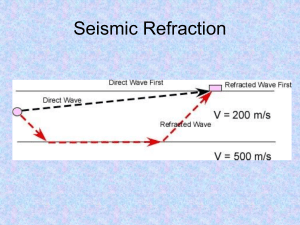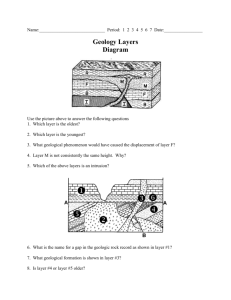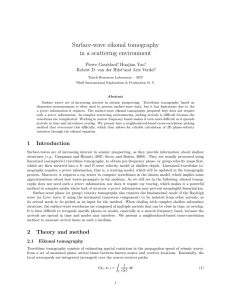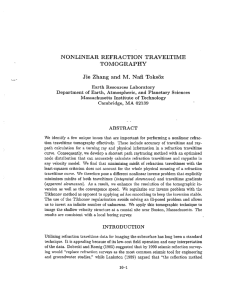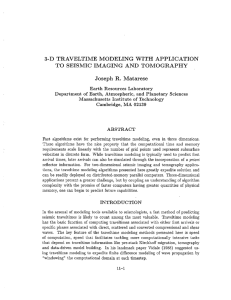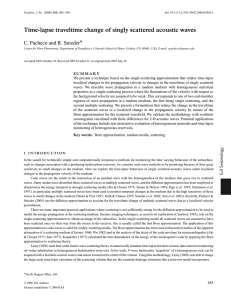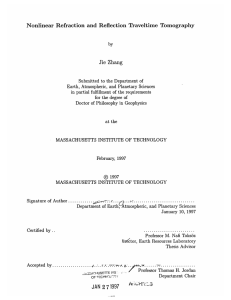Document 7812207
advertisement
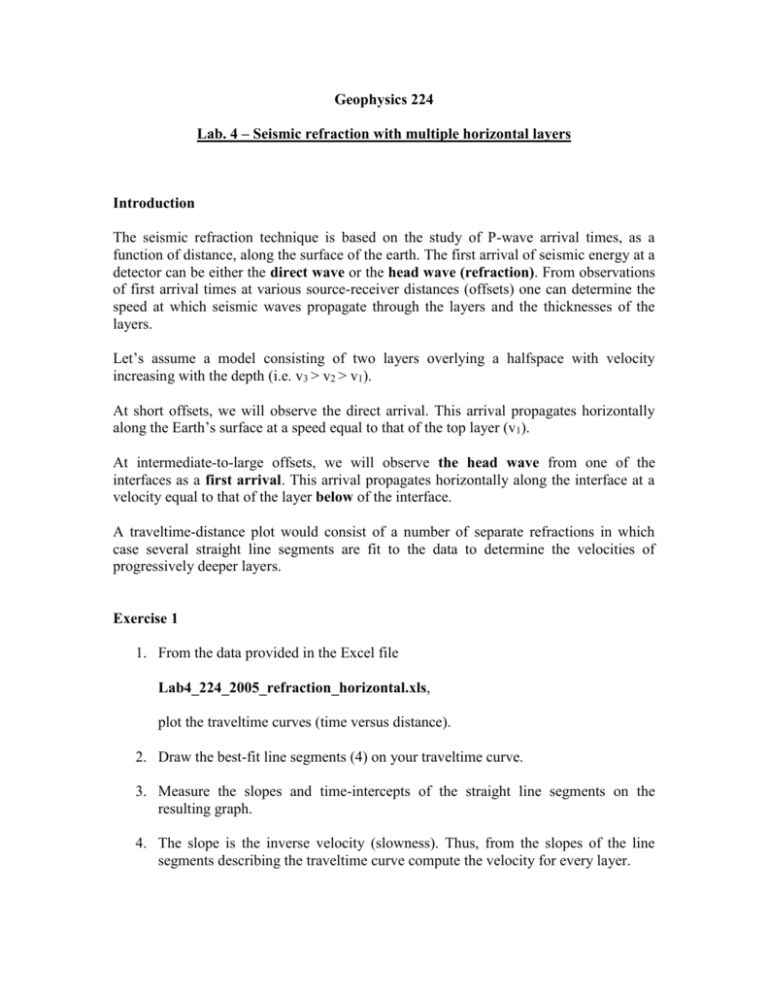
Geophysics 224 Lab. 4 – Seismic refraction with multiple horizontal layers Introduction The seismic refraction technique is based on the study of P-wave arrival times, as a function of distance, along the surface of the earth. The first arrival of seismic energy at a detector can be either the direct wave or the head wave (refraction). From observations of first arrival times at various source-receiver distances (offsets) one can determine the speed at which seismic waves propagate through the layers and the thicknesses of the layers. Let’s assume a model consisting of two layers overlying a halfspace with velocity increasing with the depth (i.e. v3 > v2 > v1). At short offsets, we will observe the direct arrival. This arrival propagates horizontally along the Earth’s surface at a speed equal to that of the top layer (v1). At intermediate-to-large offsets, we will observe the head wave from one of the interfaces as a first arrival. This arrival propagates horizontally along the interface at a velocity equal to that of the layer below of the interface. A traveltime-distance plot would consist of a number of separate refractions in which case several straight line segments are fit to the data to determine the velocities of progressively deeper layers. Exercise 1 1. From the data provided in the Excel file Lab4_224_2005_refraction_horizontal.xls, plot the traveltime curves (time versus distance). 2. Draw the best-fit line segments (4) on your traveltime curve. 3. Measure the slopes and time-intercepts of the straight line segments on the resulting graph. 4. The slope is the inverse velocity (slowness). Thus, from the slopes of the line segments describing the traveltime curve compute the velocity for every layer. 5. To calculate the layer thicknesses, Snell’s Law is used to determine the angles that the seismic rays make with respect to each layer. For two layers, Snell’s Law yields: sin( 12 ) sin( 90) v1 v2 where θ12 is the angle within the first layer for the two layer case. The first layer thickness z1 can be obtained from the corresponding time intercept: t2 2 z1 cos( 12 ) v1 For three layers, z2 can be found from: sin( 13 ) sin( 23 ) sin( 90) v1 v2 v3 and t3 2 z1 cos(13 ) 2 z 2 cos( 23 ) v1 v2 Using the formulas from above, compute the thickness for both layers (z1 and z2). 6. Sketch the subsurface structure determined by your graphs and analysis. Label your sketch with the appropriate velocities and thicknesses. Exercise 2 On the figure of the real data provided, draw the traveltime curves. From the slope find the velocities, and calculate the thickness of the first layer March 2006



